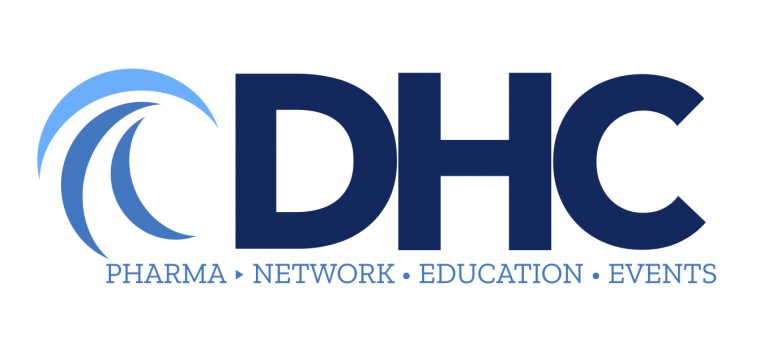Interview: Expert Roundtable on Adherence - August 2020
With Mark Bard, Lisa Flaiz, Eric Peacock, Ari Schaefer, Tim Fisher, and Jonathan Lanznar






How Tech is Making Adherence Easier
A 12 minute watch. This video is a summary of a conversation between the DHC’s Founder Mark Bard and Lisa Flaiz, Eric Peacock, Ari Schaefer, Tim Fisher, and Jonathan Lanznar. The discussion focused on the topic of adherence during a dynamic environment, the impact of a pandemic on patient behavior, and how we can connect different parts of the system. Panelists discuss ways digital technology can be applied to inform and empower patients, resulting in improved adherence. A transcript of the video is also available below.
Video Transcript
Mark Bard: My name is Mark Bard, Co-Founder of the DHC Group. I’d like to welcome you to this virtual round table today on the topic of adherence talking about not only market trends and how we connect different parts of the system, but certainly, in the spirit of the Digital Health Coalition and everyone in the industry, we’re trying to figure out how technology is making this process easier, or faster, better, cheaper as I think we always like to think about. I’m going to quickly introduce our panelists for the day. We’ve got Lisa Flaiz with BMS, Director of Multichannel Marketing, significant experience across the pharma industry as well as agencies. She’s going to be helping us to understand how do we think about this from a market perspective but also from pharma. We’ve got Eric Peacock, Co-Founder and CEO of MyHealthTeams, doing some really cool work in the social space of how do we connect with consumers that are dealing with chronic health conditions.
Then we’ve got two individuals, two experts from Klick. Klick’s been a great partner of the DHC over the years. We’ve got Ari Schaefer, Managing Direct, significant experience on the client-side as well as strategy. Then Tim Fisher, VP of Behavioral Science, helping us understand some of the behavioral components of adherence and what’s happening out there. Then we’ve got Jonathan Lanznar of – with Truveris, Vice President with Truveris is going to help us understand how all these pieces start to come together in the connections. I’d like to turn it over to Lisa to kick it off with what’s the state of adherence today?
Then we’ve got two individuals, two experts from Klick. Klick’s been a great partner of the DHC over the years. We’ve got Ari Schaefer, Managing Direct, significant experience on the client-side as well as strategy. Then Tim Fisher, VP of Behavioral Science, helping us understand some of the behavioral components of adherence and what’s happening out there. Then we’ve got Jonathan Lanznar of – with Truveris, Vice President with Truveris is going to help us understand how all these pieces start to come together in the connections. I’d like to turn it over to Lisa to kick it off with what’s the state of adherence today?
Lisa Flaiz: Thanks, Mark. In the current market, which has this bizarre external influence of a pandemic, pharma has come to lean on digital health to help maintain adherence. Because of this new dynamic, digital solutions are even more of a must-have, not so much a nice to have, than ever. There’s been a plethora of data that shows that new patients starts are down in this current climate. From a business perspective, maximizing the revenue from existing patients becomes an even more critical goal, not to mention the benefits to the patients themselves, of course.
Ari Schaefer: When we talk about adherence, it’s not just a singular issue affecting a singular individual or individual type. There’s so many reasons that people might be struggling with taking their medication from the external factors that we’re all facing right now that make it harder for us sometimes to remember to do all the things we’re supposed to be doing all the way to the way that the pills were designed from the very beginning or the medical device was designed from the very beginning.
Tim Fisher: Adherence is also an issue about the broader context. We’re seeing this a lot with COVID right now, where there’s a lot of struggles in terms of people being adherent to issues around COVID. The context is really becoming much more of an important piece for us to be able to address. It’s the missing piece. There’s a lot of work that we can do and a lot of exciting things happening to beginning – to think about the contextual issues.
Eric Peacock: Two huge changes have happened. The doctor’s office is out of context. It’s been taken out of the equation a lot because people are just not going to the doc’s office for fear of contracting the Coronavirus.
The second is, in that place, a lot of them are – and in the absence of good information, a lot of them are making their own decision. At MyHealthTeam, we have all these social networks for people of chronic diseases like rheumatoid arthritis and MS. These are things where they’re typically taking an immunosuppressing drug. They’re saying, okay, do I actually want to do that while this virus is out there? Is that safe?
There’s so much more to what’s going on in that patient’s mind. Thirty-five percent of all of our members have some form of depression because they’re dealing with a chronic condition. They might have pain as well. When you have depression, you’re not going to have good outcomes, even if that drug is working. Treating the entire patient, particularly right now, is really critical.
The second is, in that place, a lot of them are – and in the absence of good information, a lot of them are making their own decision. At MyHealthTeam, we have all these social networks for people of chronic diseases like rheumatoid arthritis and MS. These are things where they’re typically taking an immunosuppressing drug. They’re saying, okay, do I actually want to do that while this virus is out there? Is that safe?
There’s so much more to what’s going on in that patient’s mind. Thirty-five percent of all of our members have some form of depression because they’re dealing with a chronic condition. They might have pain as well. When you have depression, you’re not going to have good outcomes, even if that drug is working. Treating the entire patient, particularly right now, is really critical.
Jonathan Lanznar: I think when we think about adherence, it’s a really an all hands on deck type of problem where you need every player in the market to be involved: the physician, the patient, their caregiver, pharma, the pharmacy. Integrating the data, getting the insides from across the full platform is important. I also think that what Lisa and Ari said about it being not just about keeping people on therapy but getting them on therapy in the first place is one of the biggest issues with driving adherence long-term. Really some of the issues we’ve seen there is around access to therapy, or even more importantly, perception of access to therapy where there’s a gap between what they actually can access and what they believe they can access.
Mark Bard: Where can tech help and where is it just limited by just trying to remember to take something?
Eric Peacock: I think the main way it helps is it allows you to go where the patients are and where they’re having that conversation. Right now, that’s social, in particular, in the last three or four months. There’s all different aspects of adherence, but one of them is winning the hearts and one is winning the minds.
In their hearts, they have to believe this thing is going to work for them. They have to be educated on what to expect. I think what you use social for is go there and educate them transparently. It doesn’t have to be pushing a drug; it’s just setting the right expectation through education.
In their hearts, they have to believe this thing is going to work for them. They have to be educated on what to expect. I think what you use social for is go there and educate them transparently. It doesn’t have to be pushing a drug; it’s just setting the right expectation through education.
Lisa Flaiz: There’s been this great intersection of patients seeking more digital assistance to overcome gaps in treatment and gaps in contact with their HCP and pharma companies and the vendors that support the industry seeking to raise the bar on the support offerings available from education to access services to financial support. Remote care is certainly a very important part of the healthcare supply chain now.
Tim Fisher: How can we begin to be smarter about figuring out what kind of intervention individual patients need? I think an area of promise that we’re seeing some work in is an area of behavioral biomarkers, a certain area that we’ve been working in to identify markers of patients who are at risk. How can we begin to intervene not just when a problem happens but even ahead of time to give them additional kinds of support?
Ari Schaefer: Adherence is not a binary state. With a lot of medications, it’s not, did they take or did they not take it, so working with certain clients or talking about whether or not they’re taking the medications correctly. The ability to use digital platforms to track and monitor not just the instance of whether I’ve taken the pill or not but whether or not that pill or that inhaler was taken correctly, that’s an important influencer in our strategy.
Secondarily, we talk a lot about the patient outcome being self-aware. Are patients able to understand whether or not the medicines are helping them in the way that they’re supposed to? Helping create a feedback loop where patients are able to see their outcomes improving even incrementally for certain conditions, particularly in the urology space, that’s an important part of building up these adherence challenges.
Secondarily, we talk a lot about the patient outcome being self-aware. Are patients able to understand whether or not the medicines are helping them in the way that they’re supposed to? Helping create a feedback loop where patients are able to see their outcomes improving even incrementally for certain conditions, particularly in the urology space, that’s an important part of building up these adherence challenges.
Jonathan Lanznar: In the pharmacy dynamic, supplementing what the local pharmacist is doing to help them keep people adherent is incredibly important. I think it’s a fairly heterogeneous experience from pharmacies that you’re getting across the market. Technology can play a role. I think what you have with large chain stores, you talk about pharmacy, they have the technology, but they might not have the personal touch.
I think this goes back to the fact that there’s not a one size fits all type of approach that’s going to fit there, but you need to take an approach that’s going to piecemeal everything together and meet the patient where they are. We can’t say, come to us; we have the adherence. You have to meet them where they’re actually operating, where they’re working, and the whole context of their entire health, not just the individual brand or product that they’re on.
I think this goes back to the fact that there’s not a one size fits all type of approach that’s going to fit there, but you need to take an approach that’s going to piecemeal everything together and meet the patient where they are. We can’t say, come to us; we have the adherence. You have to meet them where they’re actually operating, where they’re working, and the whole context of their entire health, not just the individual brand or product that they’re on.
Lisa Flaiz: There’s probably still a wealth of opportunity for pharma companies to partner with these pharmacies to deliver on manufacturer support programs, including savings programs and access offerings. I think with this kind of convergence, if pharma’s able to start working more with pharmacies on these kinds of programs, it will make it even easier for pharma to wrap services around its brand, the easier it is to get a patient on a prescription and keep them on a prescription, the more likely physicians are to keep prescribing it if they’re dealing with less of those phone calls from patients who are having trouble getting their drug. I think there is a halo effect of the greater acceptance of this form of healthcare delivery that may be a greater opportunity to connect HCPs with the patient post RX, post prescription.
Ari Schaefer: The pair, the PBM specifically, have a visibility to data that allows them to do some amazing things in partnership with pharma companies as it relates to specific products. I think we’ve moved far beyond where the singular investment of the brick and mortar pharmacy was in drug-drug interaction counseling. Now, with these digital platforms, they can exist from CVS, and Walgreens, and other partners even, especially in pharma space. We’re seeing the holistic view of the patient start to bridge the gap between medication use to health and wellness. I think that’s where the technology investments should be placed for pharma companies and pairs alike because that’s ultimately what’s going to be best for the patients is we treat them as an individual across the spectrum of their needs as opposed to as a taker of the drug that we’re selling.
Tim Fisher: There’s also obviously a privacy angle and sensitivity around who has my information, which some people will react quite strongly to. I’d also say though that there may be ways to continue to work at empowering the patient and helping them to generate better insight about themselves in a way that they could bring forward to their physician as well. Sometimes, we talk a lot about making things easier for our patient, but there’s some benefit to effort into having them monitor and play a more proactive role in watching their adherence, monitoring their condition, and then taking that information to have a discussion with their physician because they’re going to internalize and take more ownership over the process.
Eric Peacock: Eighty-five percent of the questions that people have related to adherence can be answered by any doctor; in other words, it doesn’t have to be personalized healthcare, but you can bring good medical information and education to them. For the past three months, we’ve been interviewing a lot of doctors, much like we are here, and then putting that on our platform. You scale the countries leading expert on MS, or RA, or psoriasis, or whatever and get them in front of a 100,000 like these answering some very basic questions.
One of the most important findings we had is, particular in the time of COVID, is that you need to bring to them what sounds obvious, but it’s disease specific COVID information. Am I at greater risk of getting COVID? Am I at greater risk of getting it because I take [11:00] modifying therapy that’s immunosuppressing? When you have doctors walking through that drug by drug and explaining what is known, that really helps them. That helps educate them.
You can also proactively educate them about symptoms they should be thinking about and keeping track of and how to talk to your physician about it. We just have to show people here’s things you should bring up with your doctor. Then I think proactively identifying some of those opportunities where perhaps they’re not raising other hurdles to adherence.
For example, somebody in our social network says, I’m now unemployed. I can’t afford my therapy; guess I’m going off the drug. We can’t assume that they actually know about copay assistance; most do not. You have to use that opportunity right then and there to basically say, all right, I’m going to figure out how to point this person to the copay assistant program that they have. I think it’s about giving them information that they can bring both to the doctor and their payer to empower them.
One of the most important findings we had is, particular in the time of COVID, is that you need to bring to them what sounds obvious, but it’s disease specific COVID information. Am I at greater risk of getting COVID? Am I at greater risk of getting it because I take [11:00] modifying therapy that’s immunosuppressing? When you have doctors walking through that drug by drug and explaining what is known, that really helps them. That helps educate them.
You can also proactively educate them about symptoms they should be thinking about and keeping track of and how to talk to your physician about it. We just have to show people here’s things you should bring up with your doctor. Then I think proactively identifying some of those opportunities where perhaps they’re not raising other hurdles to adherence.
For example, somebody in our social network says, I’m now unemployed. I can’t afford my therapy; guess I’m going off the drug. We can’t assume that they actually know about copay assistance; most do not. You have to use that opportunity right then and there to basically say, all right, I’m going to figure out how to point this person to the copay assistant program that they have. I think it’s about giving them information that they can bring both to the doctor and their payer to empower them.
You can connect with the experts on LinkedIn:
Lisa Flaiz on LinkedIN
Eric Peacock on LinkedIN
Ari Schaefer on LinkedIN
Tim Fisher on LinkedIN
Jonathan Lanznar on LinkedIN
Lisa Flaiz on LinkedIN
Eric Peacock on LinkedIN
Ari Schaefer on LinkedIN
Tim Fisher on LinkedIN
Jonathan Lanznar on LinkedIN
